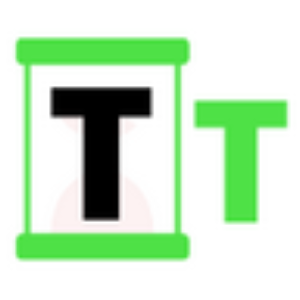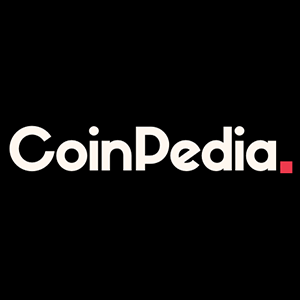Issuance vs. Destruction: What’s Driving the Native Tokens of Ethereum, Solana, and Tron?
5 min read
The wider crypto market is now in a bearish phase, but the price behavior of native tokens such as ETH, SOL, and TRX is showing some unexpected patterns—making us question some of our recent assessments models. Tokens, of course, are affected by sentiment and trading volume, and recent performance is more or less in line with what we might expect given the current overall market conditions. But when you start looking under the hood at what’s really going on at the most basic level—what’s coming in, what’s going out, and what’s being done with what’s been either issued or destroyed, you start seeing some really interesting things. The research shows that Tron, often viewed as the underdog in comparison to Ethereum and Solana, has sneakily outshone both rivals in vital areas like token destruction, net supply alterations, and even annual price expansion. Meanwhile, Ethereum hangs around, propelled by the still-thriving DeFi and LRT ecosystems. Solana, in contrast, has failed to build on its earlier buzz as an “Ethereum killer,” bogged down, inflationary, and with an almost 2018-style fading meme. Token Issuance Trends Reveal Supply Dynamics A primary aspect determining the worth of any native token is the quantity that is being given out or put into circulation. In the last year, Ethereum enjoyed a comparatively calm uptick in total supply, with 575,897 ETH converted into circulation—equal to an approximate $1.445 billion—representing a peaceful 0.47% growth rate. This issuance is in line with Ethereum’s current migration toward a more deflationary model post-Merge and EIP-1559. Even so, ETH did still see net issuance. On the contrary, Solana had a significantly higher issuance rate. Altogether, 24.82 million new SOL tokens started circulating, bringing in about $3.7 billion in freshly minted value—an inflation rate of 4.12%. That figure is particularly remarkable because it’s the exact opposite of what you’d expect from an Ethereum-based project that aims for deflation. Next is Tron, which delivered a surprising twist: it achieved a negative issuance rate. The total supply of TRX decreased by over 1.46 billion tokens, equating to a 1.55% contraction and approximately $420 million in value. This net reduction in supply positions Tron as the only one of the three networks to actually reduce circulating supply over the past year. In our assessment, this is a stronger commitment to controlling inflationary pressures than what the other two networks are doing. Token Destruction: Tron Leads the Pack Token supply management and value preservation don’t just hinge on token issuance; they also depend on what happens to tokens once they’re in circulation. For the past year, Ethereum has had a pretty good story to tell on this front. Its basic narrative could be summarized in a meme: “ETH good, NFTs better, or even memes best.” More seriously, if we look at ETH supply growth and the overall issuance of ETH in the context of a story of rising demand for network usage, the two graphs below tell a pretty decent story about the ETH supply and demand situation. Higher nominal destruction was recorded on Solana compared to Ethereum, which burned 2.25 million SOL; that would be worth around $337 million today. The burn rate was at its peak during January 2025, an episode that was obviously driven largely by what’s become an incredible speculative mania for trading meme coins. However, in terms of the issuance of Solana overall, the amount being burned relative to that was just way lower. And as the mania around meme coins has quieted down, so too has the burn rate. 决定 $ETH / $SOL / $TRX 这类公链原生代币涨跌的主要因素,除了市场买卖力量还有什么? —— 增发与销毁情况 去年 11 月的上涨行情中我曾整理三条网络的相关数据,大半年后的今天,看看 Memecoin 热度消退且大盘走熊的现在,情况又如何吧 增发情况对比 Ethereum:总供应量 1.2 亿枚,近一年增发… pic.twitter.com/k7IAfVeXBN — Ai 姨 (@ai_9684xtpa) June 9, 2025 Once again, Tron stood apart. Over the past year, it burned 3.35 billion TRX, worth about $958 million—more than either Ethereum or Solana. Notably, over 96% of this burning was tied to TRC20-USDT activity, indicating a consistent and utility-driven source of token destruction. Unlike Ethereum and Solana, where destruction rates fluctuated with market trends, Tron’s burn activity peaked in August 2024 and remained relatively steady, thanks to the network’s integration with USDT and its delegated proof-of-stake consensus model. Price Performance Defies Expectations Good tokens and their performance: – Even though Ethereum and Solana dominate the narrative, token performance tells a different story. – Over the past year, the value of ETH increased by a respectable 32.36%. – SOL experienced a modest increase of 8.47%, which seems to hinge on meme coin activity—activity that has, thankfully, decreased. – TRX, on the other hand, surprised everyone with a staggering 151.69% increase in value over the past year, making it by far the best performer in this peer group. This unexpected result suggests that market stories don’t always match the underlying fundamentals. Ethereum’s worth is inextricably linked to DeFi and the utility of LRT, rendering it far more susceptible to the transaction volume than a typical crypto asset would be. And Solana, after being proclaimed as the future of high-speed blockchain apps, surged during the meme coin mania but is now sinking under the twin pressures of increased competition from BSC and others and a decline in its core altcoin narrative. Tron often escapes the notice of eminent discussions in the world of cryptocurrency. It largely maintains a silence that belies an effective and efficient strategy that keeps the Tron network a favorite among many. And its token, TRX, has performed in ways that have won it many fans. What are the main elements of this strategy? 1. Consistent supply reduction 2. Steady burn rates powered by USDT usage 3. Robust consensus mechanism All of these are executed in a disciplined manner that keeps Tron quietly humming along. In conclusion, trading activity may be the most visible price driver, but long-term performance in this bearish cycle is starting to be determined by how networks manage issuance and destruction. Based on our data, Tron may have just cracked the code on sustainable token economics. That’s pretty much it. Disclosure: This is not trading or investment advice. Always do your research before buying any cryptocurrency or investing in any services. Follow us on Twitter @nulltxnews to stay updated with the latest Crypto, NFT, AI, Cybersecurity, Distributed Computing, and Metaverse news !

Source: NullTx



